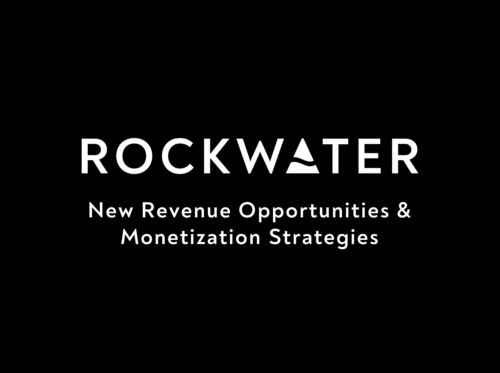Conservative Creator Monetization Playbook
RockWater Roundup
RockWater analysis to make you a better investor and operator. Today we deep dive into the revenue models employed by conservative political influencers, and what insights can be learned by the creator economy at large.
Conservative Creator Monetization Playbook
What’s the most valuable subscription or CPG product launched by a single creator?
Answer: Andrew Tate’s Hustler University — 200k members paying $600 per yr = $120M ARR. Valuing at a SAAS multiple of 8x ARR → that’s a $1B business.
There’s obviously been a lot of hype around Mr. Beast Burger, Prime, Feastables, Emma Chamberlain Coffee, etc… but don’t sleep on Tate; his numbers speak volumes.
The Bigger Picture:
Conservative media figures have silently growth-hacked their way to the top of the creator economy.
Why?
Conservative creators were forced to get ahead of what became major platform shifts.
1. Premium Subscription Content.
Long before 2022’s digital ad collapse, conservative creators had already been dumped by advertisers and were thus pivoting their content from free-to-watch, into paid subscriptions.
-
Andrew Tate launched Hustler University, currently generating $120M ARR
-
Sam Harris debuted the Waking Up meditation app, 8 figure ARR
-
Steven Crowder introduced a subscription “Mug Club” that is turning $7.5M ARR
-
Dave Rubin created Locals, which was acquired by Rumble for $7M
-
Jordan Peterson is launching Peterson University, a subscription learning product (in stealth)
2. O&O CPG.
Creators are now realizing that the real money to be made isn’t in brand sponsorships; it’s in owning the brands. Conservative creators have been on this for a while – they’ve been deemed “too controversial” by many brand sponsors and thus developed their own product lines to sell instead.
-
Joe Rogan co-founded Onnit supplements which he heavily promoted on his podcast. Onnit was sold to Unilever in 2021 for an estimated $150-200M.
-
Ben Shapiro’s The Daily Wire launched a subscription shaving brand, Jeremy’s Razors, after Harrys pulled ad spend off of DW’s podcasts. Jeremy’s Razors sold 45k subscriptions within the first week of operations and has launched new product lines like hygiene and candy. (Fun fact – the pic for this post is an advert DW ran of taking a flamethrower to Harry’s product line)
-
Alex Jones bought white-label supplements to sell in his merch store under InfoWars branding. His divorce proceedings show that from 2015 to 2018 he sold $165M, or $55M per year. Assuming a conservative 35% net margin that’s $20M per yr in profit.
3. Omnichannel Content Distribution.
Creators now see the power of selling their sawdust, by making content on 1 platform and then cross-posting it onto others. Make a TikTok → then post it to YT shorts → then post it to IG Reels. Companies like Spotter have created 9 figure businesses by adding infrastructural leverage to this concept. Conservative creators again were ahead of the game here – to avoid ban risk by any specific platform they’ve always cross-posted content across many platforms, making them “uncancellable”
The Two Distinct Approaches:
It’s fascinating to see the audience acquisition/retention, monetization, and community mgmt tactics that conservative creators pioneered are now being adopted by the larger creator ecosystem. Nevertheless, there remain foundational differences in how conservative creators engineer their monetization funnel.
Popular Approach – Maximize Reach and Relevance.
e.g. Mr. Beast’s content has something for everybody. His goal is to be a non-controversial household name with an enormous TAM. If he launches a product that gets a small capture rate of his huge audience then he has a killer business.
Juxtapose that to…
Conservative Creator Approach – Limit Reach, But Maximize Purchase Conversion.
e.g. Andrew Tate has the opposite approach of Mr. Beast; his content is controversial, he’s been kicked off most platforms, and his name is met with contempt from most people. However, by creating controversial content, he engineered a die-hard fan base that he deeply monetized. His subscription content product is $600 per year… is the average Mr. Beast fan buying $600 of Feastables each year? Tate can achieve more revenue with less audience scale, that is impressive.
Net / Net:
I’m fascinated by the conservative subset of the creator economy. I expect they’ll continue developing orthogonal tactics to conventional creator economy wisdom, some of which will eventually become common practice by mainstream creators. Examining the new tactics conservative creators use offer a glimpse of what could be on the horizon for the creator economy more broadly.
One such trend I’m looking at is the rise of alt content distribution platforms as a means to hyper-engage with core fandoms, e.g. Parler, Rumble, Truth Social, Gab, etc. May be indicative of a platform shift away from those with a biz model tailored towards one-size-fits-all content. That’s a future blog post 😉
Mike is a Director at RockWater Industries. We do financial and strategy advisory for media, tech, and commerce. From M&A and fundraising to consumer research and go-to-market planning.
DM him on LinkedIn or email him at mike @ wearerockwater dot com



